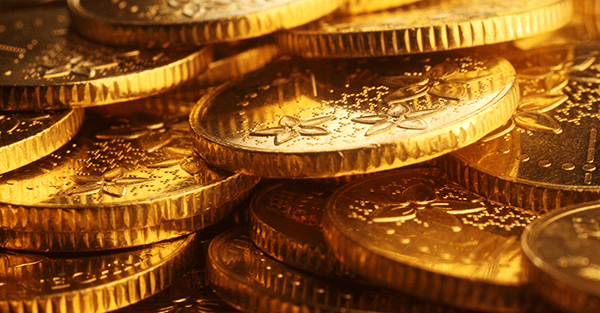The Cheapest Ways & Places to Buy Gold in 2023
-
AUTHOR
James Hickman -
PUBLISHED
October 8, 2020
Looking to buy gold or silver as an insurance policy against the uncertainty the world faces today? Below we reveal the cheapest ways to buy gold and silver and how you can find the least expensive places to buy gold coins, gold bars, and silver, including various online retailers.
Cheapest Gold Price In The World
Buying gold and silver makes a lot of sense, especially within the context of the unprecedented events of the past 18 months. In 2021 we saw runaway government spending and money printing, an unstable economy due to COVID lockdowns, and a political climate characterized by regular eruptions of riots and destruction.
But like with any other purchase, you want to make sure you get the most bang for your buck when buying gold. It is easier to find the best gold price when you have the background on how the price is determined, which we also discuss. And then, we also dive into why it is so important to buy precious metals today.
Precious metals, in this environment, are an insurance policy. There is no telling exactly what will happen next. But the dollar, financial markets, and even social stability are at risk.
It, therefore, makes sense to hold some of your savings in an asset with real value. And for 5,000 years, gold has held the most prominent and secure role as a store of value, especially during uncertain times.
Table Of Contents
- The Cheapest Place to Buy Gold (and Silver)
- The Cheapest Places to Buy Gold Coins Online in 2022
- The Cheapest Gold Coins
- The Cheapest Silver
- Pure Gold Bullion Bars Are Cheaper Because of the Lower Premium
- How the Price of Gold Is Determined
- The Price of Precious Metals in 2022
- Why Buy Gold and Silver in 2022?
- How to Store Precious Metals
- Frequently Asked Questions
- Conclusion and Further Resources
Learn EVERYTHING you need to know about
buying, owning, storing and investing in gold & silver…
Download our FREE precious metals report and learn…
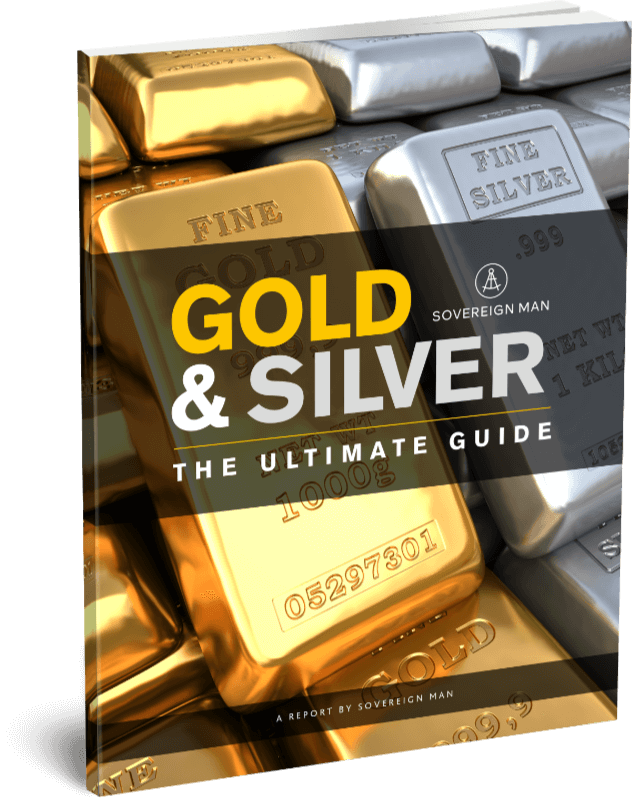
- How you could DOUBLE your money with gold (and perhaps 5x it with silver)
- The 5 smartest, safest and most lucrative ways to own gold and silver (and one way you should definitely avoid)
- Why gold is the ultimate anti-currency and insurance policy against the systematic destruction of the US dollar (that everyone should at least consider owning)
- Why ETFs are a lurking timebomb and why you want to avoid them like the plague
- And everything else you need to know about buying, owning, storing and investing in precious metals
This 50-page report is brand new and absolutely free.
The Cheapest Place to Buy Gold
(and Silver)
Hong Kong could be the country with the cheapest gold price in the world. You can walk into a number of banks and purchase gold coins, often with a lower premium compared to other countries.
For instance, when we checked in October 2020, the premium on a Hang Seng Bank branded one troy ounce gold bar was just $5 USD over the spot price.
That is very cheap. But you generally have to walk into a physical bank branch in order to purchase gold from Hang Seng or other Hong Kong banks.

Also, keep in mind that if the design of a gold coin or gold bar is not widely recognized, you are essentially just paying for the gold bullion. There is no benefit to owning that particular style coin; all the value is in the actual metal content.
In contrast, the Canadian Gold Maple Leaf one troy ounce gold coin is popular, well recognized, and comes from an official government mint. It can be found online for as little as $63 USD over the spot. It will be easier and potentially hold a higher premium if you ever try to sell it in the future.
For the same Canadian Gold Maple Leaf coin at Wing Lung Bank in Hong Kong, you would pay a $90 USD premium over the spot.
(Keep in mind precious metal prices are constantly changing. This information is accurate at the time of publishing but is meant to serve more as a general reference guide.)
Wherever you are in the world, it is worth checking your local banks and gold shops. Compare those prices to the cheapest options available online.
The Cheapest Places to Buy Gold Coins Online in 2023
Generally, the best deals on gold coins can be found on large retail websites that sell gold and silver coins and bars. The price per ounce decreases if you buy in bulk.
Most retailers will give you a discount for paying directly from your bank account – or sometimes even when using Bitcoin. The premium will typically increase if you want to use a credit card for payment.
Make sure that your vendor offers free shipping; otherwise, shipping a heavy metal like gold or silver can quickly become expensive.
Finally, be sure to confirm that the website you choose to buy from insures their packages. You don’t want thousands of dollars worth of precious metals getting lost in the mail.
Then, simply find the lowest premium on the most universally recognized gold and silver coins.
Those include:

US Eagles
(gold and silver)
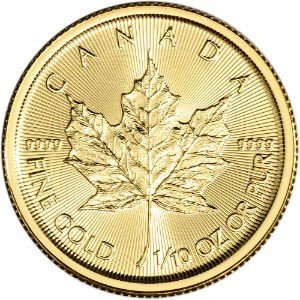
Canadian Maple Leaf
(gold and silver)
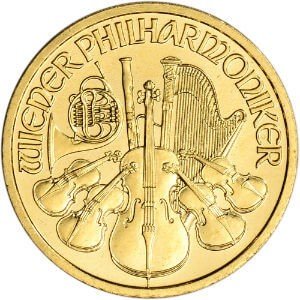
Austrian Philharmonics
(gold and silver)
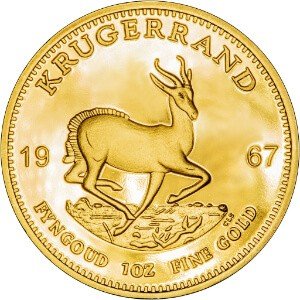
South African Krugerrands
(gold only).
In October 2020, we analyzed the premium (price over spot) across six websites. The following chart shows the premium to purchase a single, random year, one troy ounce coin in three categories.
The price reflects the cheapest payment option, wire/check. We also list the premium as a percentage of the spot price.
| Website | Premium on Canadian Gold Maple Leaf* | Premium on American Gold Eagle* | Premium on Silver American Eagle* | Shipping in Continental US |
| Kitco.com | $63 (3.3%) (On Sale) $79 (4.1%) |
$84 (4.4%) | $6.76 (27.7%) | Insurance $6.50 per $1000 purchase. Free shipping on orders over $5,000 (Otherwise $15 ground). |
| Silver.com | $90 (4.7%) | $112 (5.8%) | $5.47 (22.5%) | Insured, free shipping on orders over $3,000 (otherwise $7.99). |
| APMEX.com | $97 (5%) | $104 (5.4%) | $5.29 (21.7%) | Insured, free shipping on orders over $99 (otherwise $9.95). |
| GoldSilver.com | $97 (5%) | $119 (6.2%) | $5.71 (23.4%) | Insured, free shipping on orders over $499 (otherwise $25). |
| JMBullion.com | $98 (5.1%) | $122 (6.3%) | $5.94 (24.3%) | Insured, free shipping on orders over $199 (otherwise $7.99). |
| MoneyMetals.com | $102 (5.3%) | $117 (6.1%) | $6.49 (26.6%) | Insured, free shipping on orders over $500 (otherwise under $10). |
*This information was deemed accurate at the time of publication. As the price and premiums on precious metals constantly changes, use this information only as a reference guide.
The Cheapest Gold Coins
According to our go-to precious metals expert, the one-ounce St. Gaudens Gold Eagle is one of the cheapest gold coins you can buy for the value at this time.

These gold coins were minted between 1907 and 1933 and are universally recognized. That means you could essentially sell or use one anywhere in the world. This rareness and desirability give them value above and beyond the actual gold bullion content.
The St. Gaudens won’t be the cheapest if you are looking to buy pure gold bullion. But if you are also looking to benefit from the higher premium that rare coins typically carry, be sure to consider St. Gaudens coins.
The Cheapest Silver
When it comes to buying silver, our trusted expert suggests purchasing 90% silver bags of pre-1965 dimes and quarters.
Prior to 1965, these US coins were made with 90% silver and 10% copper.
A bag with a $100 face value means that there are either 1,000 dimes, 400 quarters, or some combination. These will contain approximately 71.5 ounces of pure silver.
This option has some of the lowest premiums you can pay on silver right now.
Don’t be misled by the fact that these are sometimes called “junk silver.” That just means they were previously circulated and may have cosmetic wear.
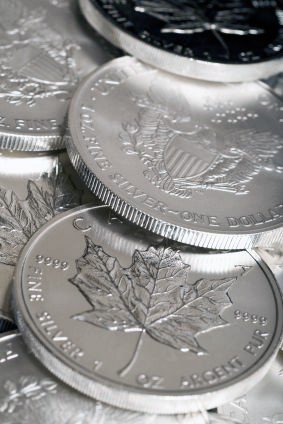
The actual silver is still just as valuable — even if the coins alone are not.
Pure Gold Bullion Bars Are Cheaper Because of the Lower Premium

Buying in bulk allows you to pay a lower premium over the spot price. The same applies to silver.
For this reason, gold coins generally cost more than gold bars.
And the larger the gold bar, the better the deals tend to be.
With bars of pure bullion, your precious metals are valuable purely based on bullion content and not for rareness or collectibility, as would be the case with St. Gaudens coins.
Sovereign Confidential Members used the following trick…
Back in March and April 2020, premiums on gold and silver skyrocketed.
The demand for physical precious metals had increased due to all the global uncertainties – and yet the spot price hadn’t risen.
At that time, we alerted our members to a way to pay a .06% to 1.5% premium on silver. Everyone else was forced to pay up to a 100% premium above the spot price, or simply wait (and risk the price of silver rising even more in the meantime).
The strategy was to take physical delivery of a futures contract.
A futures contract means agreeing now to pay a specific price later. If the actual price of the precious metals is higher when the contract matures, most people sell their futures contract for a profit.
But another option is to take physical delivery of the precious metal.
That’s what you do if your goal is to hold precious metals, as opposed to making paper money trading in precious metals.
Months after our alert, the price of silver more than doubled. Anyone who took action could sell half their silver position to recover their initial investment, and walk away with a pile of free silver.
To learn more about Sovereign Confidential, Click here.
As with most other commodities, the price of precious metals is influenced by supply and demand.
But the specific way the precious metals market works is what accounts for the mismatches we saw in 2020 on the “paper” price of gold, and the “physical” price — the premium paid over spot.
How the Price of Gold Is Determined
The price of physical gold and silver is largely determined by futures markets.
The “official” price of gold and silver is called the “spot price,” and it’s mainly derived from commodity exchanges in London and Chicago, home to the world’s most important gold and silver futures market.
A gold future is a contract entered into by a seller and a buyer to trade a certain amount of gold at a predetermined price at some point in the future.
Historically, miners used futures contracts to lock in gold prices on the day for metal that they would pull out of the ground several months in the future (hence the name). Futures contracts made their businesses much more predictable.
A gold futures contract is based on a 100 oz gold bar with a minimum fineness of 995 (99.5%). (Fineness refers to the weight of the fine metal itself, in proportion to any impurities or alloy metals in the bar.)
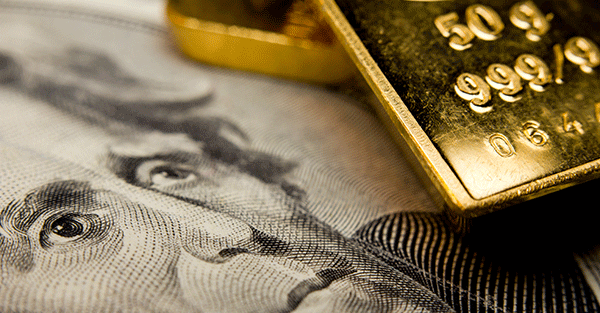
A silver futures contract is represented by a 5,000 oz silver bar with a fineness of at least 999 (99.9%). Today, contracts like these change hands over and over again among miners, traders, speculators, banks, hedge funds, and pension funds.
This constant activity is why gold’s price can sometimes be volatile. But while the gold price can quickly change, most of the underlying gold does not change hands.
In fact, only a tiny portion of these contracts ever result in physical delivery. Usually, investors have no intention of taking possession of the gold. Most simply close their positions well before the contract’s settlement date.
This is where the “paper” spot price of silver is determined. It’s the intersection of what buyers agree they are willing to pay for a contract on the futures markets and the price at which sellers are willing to sell.
Physical gold and silver usually trade at the spot price from the futures market, plus a markup to account for the cost of minting, transporting, and storing the precious metal.
The markup is called the “premium” and varies based on the type of metal you buy.
Coins, for example, usually have a higher markup than bars.
And while the physical price usually follows the spot price very closely, it’s not uncommon for the price of the physical metal to significantly diverge. That’s what happened in the spring of 2020.
The Price of Precious Metals in 2022
When COVID-19 broke out in the spring of 2020, the price of gold on the futures market dropped. That’s because traders rushed to sell all their assets (including gold and silver futures) to raise cash.
As is typical with market panics, the price of every asset class fell as investors rushed to the exits.
Investors were spooked by all the uncertainty in markets, and the safe haven of physical gold and silver made a lot of sense.
Quickly, demand outpaced the supply, and precious metals dealers around the world increased the markup at which they were willing to sell.
While silver bullion coins normally trade at around a 15% to 20% premium (for example, $24 retail on a $20 spot price), after COVID-19, it was not uncommon to see people paying 50% or even more than 100% above the spot price.
But why are precious metals considered a safe haven?
The value of precious metals increases when governments go on money-printing sprees.
The Federal Reserve doesn’t actually have a ton of wealth; it has a money printing press.
So, to pay for all the assets it acquires (like treasury bonds or mortgage-backed securities), the Fed conjures digital money out of thin air.
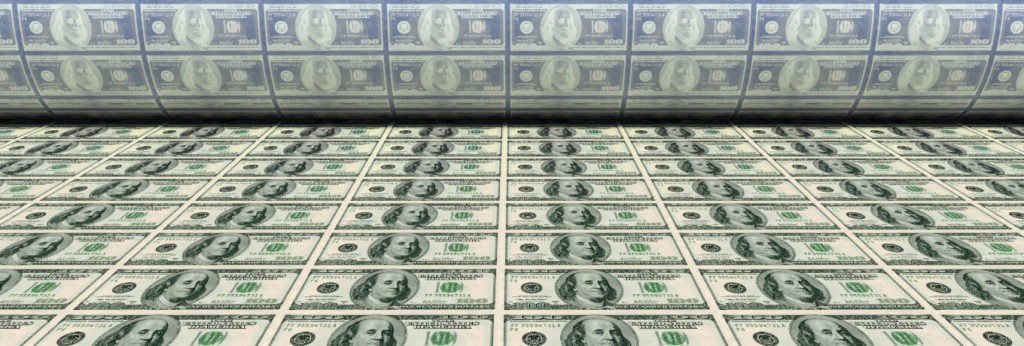
From the Federal Reserve’s founding in 1913 until the 2008 Global Financial Crisis, its balance sheet — all the assets it bought with the money it printed — grew from $0 to about $800 billion.
Then, in about six years, the Fed took its balance sheet from $800 billion to about $4.5 TRILLION.
It took almost 100 years to distribute $800 million — and SIX years to pump out 5.6X that amount.
And then, in March 2020, COVID-19 hit the United States.
The economy shut down. Production stalled. Tens of millions of people became unemployed. The US federal government authorized a $2 TRILLION emergency spending bill.
The Federal Reserve also went on an asset-buying binge to “help.”
In just two months, the Fed’s balance sheet grew from just north of $4 trillion to over $7 trillion.
In TWO MONTHS, the Fed bought 4X as much as it had in 95 YEARS.
And again, all that money was simply created from nothing.
At a time when the economy has stalled, an unprecedented amount of money is chasing after fewer goods and services.
This is a recipe for much higher price inflation.
Higher prices at the grocery store. Higher prices on Amazon.com. Higher prices for various services. Higher prices are just about everywhere.
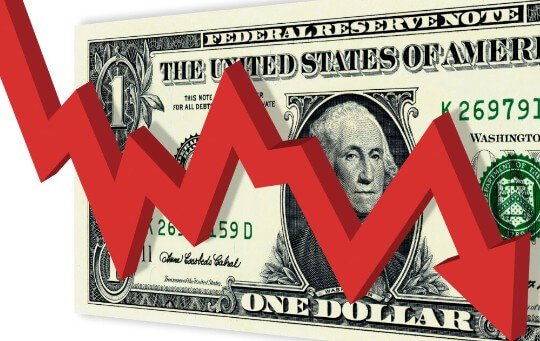
A bag with a $100 face value means that there are either 1,000 dimes, 400 quarters, or some combination. These will contain approximately 71.5 ounces of pure silver.
This option has some of the lowest premiums you can pay on silver right now.
Don’t be misled by the fact that these are sometimes called “junk silver.” That just means they were previously circulated and may have cosmetic wear.
And as prices climb, this changes consumer behavior. People trade dollars for real goods as quickly as possible, which might further fuel higher consumer prices, and which could create even more demand, which could increase consumer prices… and so the cycle repeats.
For these same reasons, the price of gold and silver skyrocketed in the years following the 2008 financial crisis and subsequent bailouts.
But never before in the history of the Federal Reserve have we seen such vast quantities of money being printed in such a short time.
All signs point to another boom for gold and silver.
If you don’t want to miss out on what could be a historic run for precious metals, download our free Ultimate Gold and Silver Guide.
It contains everything you need to know to protect your wealth with the best store of value the earth has known over the last 5,000 years.
Why Buy Gold and Silver in 2022?
Gold and silver aren’t bought to provide a return on investment.
Gold and silver could absolutely end up being a lucrative investment. But that should not be the primary reason for buying these precious metals.
We shouldn’t be interested in exchanging dollars for physical gold or silver, only to exchange the metals for more dollars at some point in the future.
Gold and silver should be considered a form of savings that exists outside of the conventional system.
Just like you protect your house with home insurance and your family with life insurance, precious metals are an insurance policy to preserve your wealth in chaotic times.
Gold is an anti-currency. It’s the kind of asset that you own because you don’t have confidence in the paper currency issued by central bankers and spent liberally by governments.
I own gold because of all the “I don’t knows” in today’s world.
And there’s certainly no shortage of “I don’t knows” today:
Will economies ever recover from the events of 2020?
Will the US and China start a shooting war?
Will the US default on the remainder of its enormous (and growing) $27+ trillion of debt?
Will the US dollar remain the world’s reserve currency for 20 more years? Ten more years?
Will unprecedented money printing and lower economic output cause inflation? Stagflation? Hyperinflation..?
I don’t know.
By being 100% in dollars (or euros, or pounds), you are effectively saying, “I DO know exactly what’s going to happen in the future. Everything is going to be fine forever, so I don’t need to hedge myself even one bit.”
That’s a pretty lofty bet.
Sure, the world is not coming to an end. Humanity has been through much worse.
But by now, it’s obvious that everything is definitely not fine with the global economy, financial markets, or social fabric around the world.
And since none of us can predict what else is ahead of us beyond 2020, gold is there for the “I don’t knows.”
If you have doubts about your country’s financial future, if you’re seeing the massive amount of paper currency printed by central banks, if there’s a voice telling you that you should find a way to secure your wealth, then now is the time to explore buying some gold and silver.
One of the biggest risks is paper currency, specifically, the US dollar.
Actually, over the long-term, ALL paper currencies are plummeting in value. Central banks are constantly printing paper with no inherent value, basically stealing your future purchasing power.
And the Federal Reserve is leading the charge.
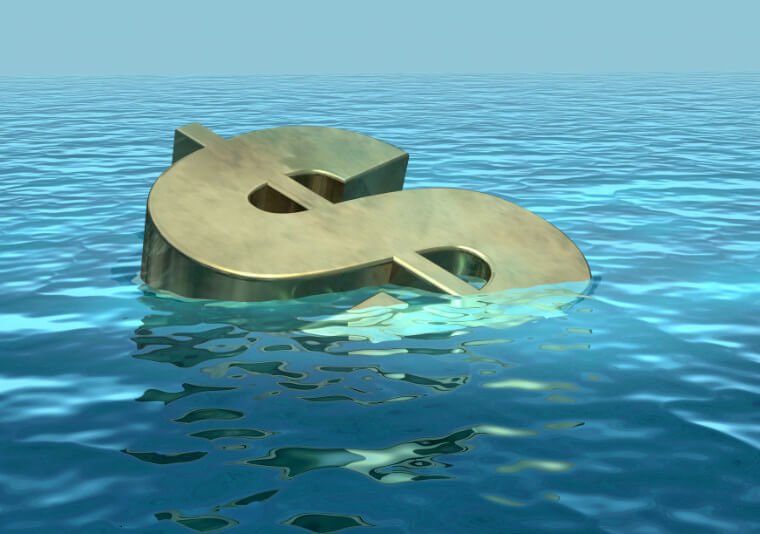
All that’s holding the US dollar-based system together is trust and confidence. But what happens when the world no longer trusts the Fed to maintain the long-term value of the dollar?
In other words, if most of your wealth is based in dollars, are bankers and central bank bureaucrats the kind of counterparties you want to completely trust? Or is there a way to diversify some of your wealth out of digital dollars held at a bank?
Physical precious metals are not digits on a screen that can be added, subtracted, inflated away, or borrowed against. They derive value from rarity, rather than pure trust.
Federal Reserve officials have not yet figured out how to print more physical gold and silver.
Precious metals are the one asset class that has held its value for THOUSANDS of years.
Paper currencies come and go. They get devalued, revalued, or extinguished altogether.
In fact, since 1700, between hyperinflations, wars, countries’ declarations of independence, new currency blocs, or replacements and discontinuances, over 650 paper currencies have come and gone.
That’s, on average, a destruction or replacement rate of roughly two currencies per year… for over 300 years.
Meanwhile, through all of these dislocations, notwithstanding a few dozen years, gold has been a reliable form of savings.
Yes, day-to-day, month-to-month, and year-to-year, the price of gold can fluctuate inexplicably.
But over the long term, whether you’re comparing loaves of bread, home prices, or government tax revenue, gold, unlike paper currencies, REALLY holds its value.
That’s why most people should consider owning precious metals. Again, not as an investment or speculation, but as a form of savings that exists outside of the conventional system.
To learn more, download our free Ultimate Gold and Silver Guide.
How to Store Precious Metals
If you’re buying precious metals to hold as an insurance policy or store of wealth, you will want a secure method of storing them.
Some you will want close by, for an emergency, just in case you have to actually use the precious metals as money.
And having them close by also means there is no counterparty risk.
So some of your precious metals should be stored…

In a home safe
It’s important to remember that it takes a lot more space to store $5,000 of silver than it does $5,000 of gold.
If you plan to store some gold and silver at home and again, holding at least some precious metals at home is a wise move, then you obviously need to protect your metals from fire and thieves.
There are all sorts of home safes on the market – from big-box stores or local companies.
From cheaper options to top-of-the-line models offered in all sizes, there’s something for every budget and your needs.
How to determine if a safe is robust enough is something we also cover in our free Ultimate Gold and Silver Guide.
Of course, there are risks to keeping precious metals at home as well.
Throughout 2020 we’ve seen riots and looting in cities across the United States. And it seems likely that things get much worse before they get better.
We see Bolshevik politicians rising. They have sticky fingers, like Franklin D. Roosevelt, who actually banned the private ownership of gold in the 1930s.
So you want some assets out of the reach of the US politicians, the US court system, frivolous lawsuits, and looters.
In these cases, it makes sense for some of your precious metals to be stored…
Overseas in a secure storage facility
Depending on how much gold you own, you might not want to keep hundreds of thousands of dollars worth sitting in your home safe, no matter how secure it is.
Outsourcing storage to an overseas provider reduces the chances of your home government’s confiscation or seizure by some litigious plaintiff.
Still, if you take precautions and buy precious metals to avoid counterparty risk, the last thing you want to do is then unnecessarily take on counterparty risk.
When you store precious metals at a questionable company’s vault, that’s exactly what you’re doing. You’re potentially compromising 100% of your precious metals stored there.
This is why it is best to store your precious metals in a safe jurisdiction, with an open and transparent storage facility.
Frequently Asked Questions
If you don’t have time to read the full article, here are the most frequently asked questions we get…
What is the cheapest country to buy gold in?
Hong Kong is a good candidate for the “cheapest country in the world to buy gold.” In October 2020, we found a Hong Kong Bank selling an ounce of gold for just $5 USD over spot.
Where is the cheapest place to buy gold coins?
The cheapest place to buy gold is usually online. Kitco.com often has the lowest premiums on gold coins -- the cost over the spot price of gold. But you have to cover the cost of insuring your package, and may have to pay for shipping as well.
Compare Kitco.com to five other popular online gold retailers in a convenient table here.
Where should I purchase gold online?
We compared six popular online gold coin retailers. We analyzed the premium (cost over spot price) for two well known gold coins, and a silver coin. We also included information on shipping.
Conclusion and Further Resources
Gold and silver are still the ultimate insurance policy when it comes to keeping your wealth safe.
If you stick with the most well-known coins and take advantage of online deals, you can acquire some valuable assets at relatively low premiums.
These can help preserve your wealth through inflation, help you hold savings without depending on sketchy banks, and they’re universally recognized and in demand as a store of value.
And in a worst-case scenario, you can even use gold and silver as money.
The US government and Federal Reserve have put US dollars in a precarious position, and most fiat currencies around the world are not any better off.
You can’t guarantee the paper money in your bank account will still be valuable tomorrow or in a year’s time. But 5,000 years of history show that gold and silver maintain their value.
Precious metals are certainly worth considering not just to protect your wealth but to grow it too.
Our free Ultimate Gold and Silver guide goes into much more detail on precious metals and also addresses other questions you might have, like investing in gold through mining companies or ETFs– definitely don’t invest in a gold ETF before reading our report.
It also covers:
- Buying options on gold futures: futures are what actually determine the “paper” price of gold, and options are a relatively risky way to speculate on that price, with a small upfront cost.
- The paper versus the physical price of precious metals, and different ways to benefit from each.
- The difference between buying pure bullion versus collector’s coins.
- Why and where to store a portion of your precious metals in a safe overseas jurisdiction.
- It makes sense to think about these things now before the dollar loses value. And also, the price of gold and even more so silver is still relatively low compared to what it could be.
Download the free report now.
Free Resources
Learn EVERYTHING you need to know about
buying, owning, storing and investing in gold & silver…
Download our FREE precious metals report and learn…
- How you could DOUBLE your money with gold (and perhaps 5x it with silver)
- The 5 smartest, safest and most lucrative ways to own gold and silver (and one way you should definitely avoid)
- Why gold is the ultimate anti-currency and insurance policy against the systematic destruction of the US dollar (that everyone should at least consider owning)
- Why ETFs are a lurking timebomb and why you want to avoid them like the plague
- And everything else you need to know about buying, owning, storing and investing in precious metals

Think what we’re doing makes sense?
Get to know us more...
Join over 100,000 subscribers who receive our free Notes From the Field newsletter
where you’ll get real boots on the ground intelligence as we travel the world and seek out the best opportunities for our readers.
It’s free, it’s packed with information, and best of all, it’s short… there’s no verbose pontification here– we both have better things to do with our time.
And while I appreciate all the visitors who stop by our website, I provide special bonuses to our email subscribers… including free premium intelligence reports and other valuable content that I only share with them.
It’s definitely worth your while to sign-up, and if you don’t like it, you can unsubscribe at any time.
How did you like this article?
Click one of the stars to add your vote...
Other readers gave this article an average rating of 5 stars.
